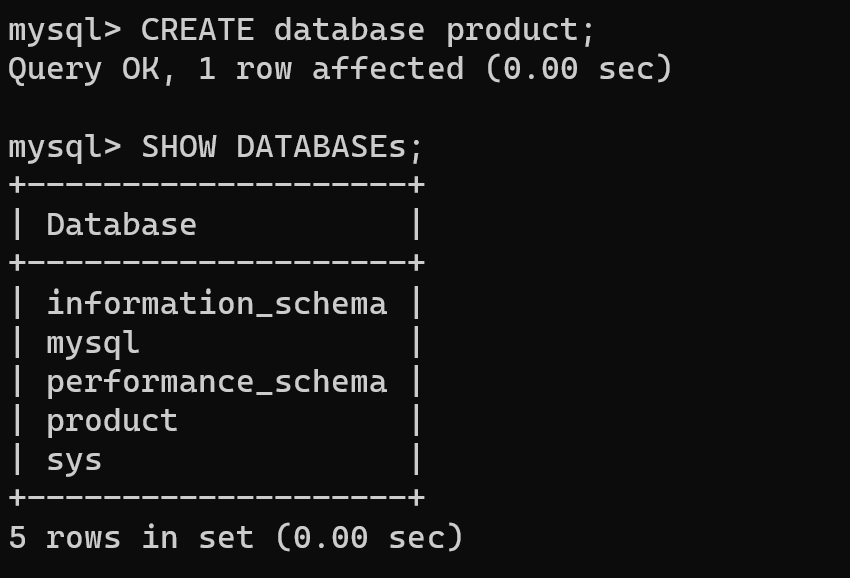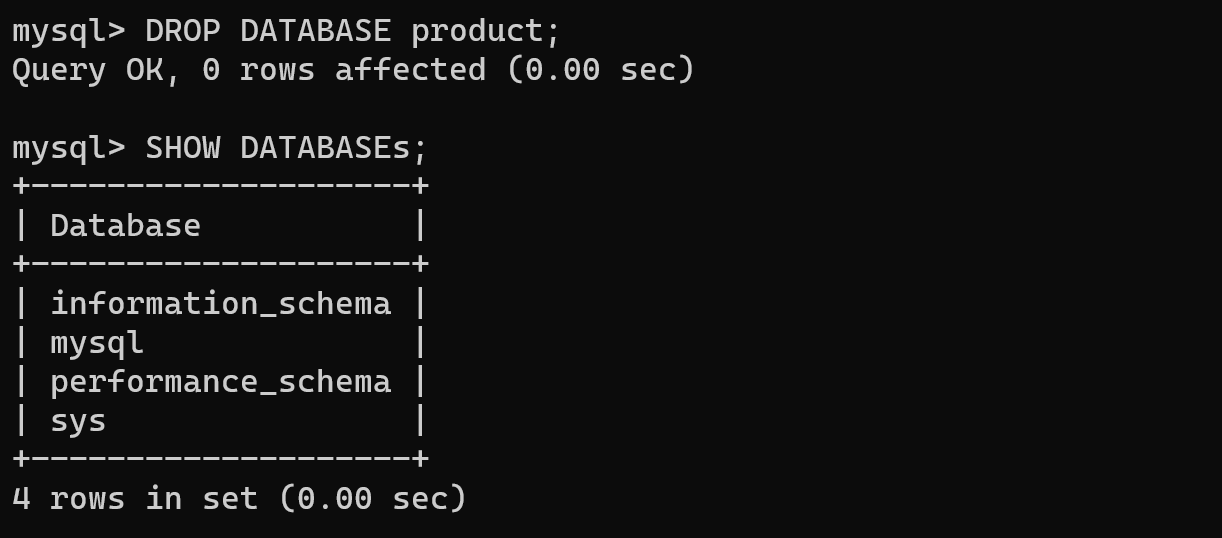Introduction
The century of big data forces people to manage, save, control, update and using data faster and sometimes rapidly. For that task we could be use table or text editor, but they don't provide needed speed of execution and not prepare for manage big data due to fault—tolerant. MySQL DBMS represent system for manage tables with data, they use declarative way to make request. People don't need to know, which is method or way to pull data, they just type in human like language request of what they need. In that we get help by unified SQL programing language. Let's have a look, how to manage that system!
Create or delete?
When approaching MySQL with it installed as your database software, equipped with administrative privileges, our first objective is to gain entry into the MySQL system. This can be accomplished by executing the subsequent command:
mysql -u root -p -h localhost
Create database by the command below then we need to check, has it been created?
CREATE database product;SHOW DATABASES;
As you can notice case of letter may be capital letters and lowercase, but that work only at the syntax command! Our data base has created, as we can see at the table above. Let's give some explanation about the syntax: CREATE, that command to make DB, DATABASE by that word we indicate that we choose type the DB and product just a label of DB.
For deletion we can execute needed command below:
DROP DATABASE product;SHOW DATABASES;
As we can see our database was delete by the command, however you may recieve error with there isn't access to the object. Ask your administrator for grant privileges to your base by the command:
GRANT ALL
on *.*
to 'your_user_name'@'domain_name';After that you will receive privilege to all DB.
Conclusion
The era of big data imposes the need for efficient data management, storage, control, updates, and rapid utilization. While traditional tools like text editors or simple tables fall short in providing the required speed and fault tolerance for managing large datasets, MySQL Database Management System (DBMS) emerges as a robust solution for table management. MySQL employs a declarative approach to query data, allowing users to express their needs in a human like language, facilitated by the unified SQL programming language.



